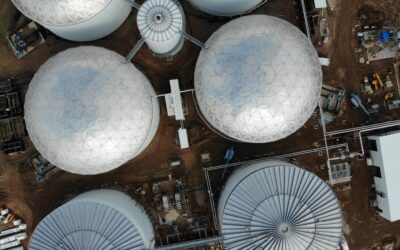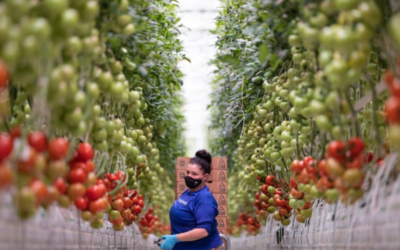ImpactAlpha, Jun 24 – The action in climate action is shifting to infrastructure.
Driven by falling price curves for renewables, mispriced risk, and the need to ramp up climate finance to avert a planetary crisis, investors are finding opportunity in distributed solar and wind plants, waste-to energy facilities, wastewater systems and sustainable agriculture.
Audio Player
On ImpactAlpha’s Call #19, Agents of Impact were given a tour of the green infrastructure landscape from leading practitioners and investors – just as infrastructure returns to the policy agenda. The Moving Forward Act, a $1.5 trillion infrastructure bill released by House Democrats, would invest in sustainable infrastructure and extend wind and solar incentives set to expire next year.
“Climate adaptation is enabled by technology, but will be executed in infrastructure,” said Equilibrium Capital’s Dave Chen.
Barbara Buchner of the Climate Policy Initiative set the stage with a high-level view of climate finance spending, which her organization tracks. Global climate spending crossed the half-trillion dollar mark in the 2017-2018 period, and climate emissions dropped by 78% on an annualized basis during the COVID-related shutdowns. But an estimated $6.9 trillion per year will be required through 2030 to meet the global sustainable infrastructure demand needs.
“Those numbers are staggering,” says Buchner. “And we are falling far short of the mark.”
Boring assets
That gap represents “a gigantic global opportunity,” said David Sher of Greenbacker Capital, which operates commercial-scale renewable energy power facilities and sponsored the call. Since 2011, the firm has invested $800 million in 172 renewable energy infrastructure projects in North America.
The strategy: buy solar and wind farms with long-term contracts in place to sell their electricity to utilities and municipalities, and generate “good, solid returns” for investors in what he says are “generally boring assets.”
Greenbacker’s corner of the market: smaller, distributed renewable projects that other investors overlook, either because they are chasing larger deals (and yields) or because they lack the specialized knowledge required. One benefit of smaller-scale projects: they are easier to get approved. In just the past month, the firm has looked at over a gigawatt worth of deals.
“Distributed generation is where growth is occurring,” said Sher.
A recent report from Goldman Sachs projects that green-energy investing will account for 25% of all energy spending in 2021 and, for the first time, surpass spending on traditional sources like oil and gas.
Mispriced risk
Caprock Group’s Matthew Weatherley-White sees plenty of mispriced risk in renewable infrastructure projects like the ones that Greenbacker operates (he’s an investor in the fund), even as the market begins to view more mature sectors like wind and solar as lower-risk asset classes.
“When we first started investing in solar project finance, we were getting mid-teens IRR (internal rate of return), and we’re now getting mid-single digits,” he notes.
In a low-yield environment, when the alternative is zero-interest Treasuries or risky junk bonds, boring can be good. But, “it’s important to recognize that this is not a liquid asset there’s no secondary market for this now,” warned Weatherly-White.
Impact investors looking to have more impact might consider project developers such as Navajo Power, which builds renewable energy plants – and jobs – on Native American lands, suggested White, who spots “pockets of mispriced risk,” throughout the renewable energy continuum.
Equilibrium’s Dave Chen seeks out pockets such as sustainable agriculture, food, water and waste-to-energy sectors. “We typically try to find market segments in real assets where sustainability causes an advantage, but where the sector is still young enough where there’s market inefficiency, information inefficiency and mispriced assets,” he says.
One example: the firm’s $40 million greenhouse in Utah that is fed waste CO2 from a connected natural gas plant (Agents of Impact were treated to the visuals thanks to the magic of Zoom backgrounds). “Agriculture as a sector is moving from a land-centric [industry] into an infrastructure industry,” said Chen.
Policy, please
Market signals – from the lower cost of capital of renewable energy to devalued oil – are clear, the panelists agreed. But policy can help accelerate the shift. In the U.S., where climate action has been sidelined by the Trump Administration, there are signs that a bipartisan groundswell could shift the tone come November.
Trevor Nielsen of the Coalition for Sustainable Jobs, a center-right coalition that supports green jobs, pointed to the success of the Great American Outdoors Act, a bill passed by the Senate with bipartisan backing that will fund maintenance projects in America’s national parks and conserve public lands.
Summed up ImpactAlpha’s David Bank: “The need is there, the vehicles are there and possibly even the political will could be there for what would be a massive infrastructure rebuild” that could put us on the path to a low carbon future and create jobs. “It’s all kind of queued up.”



